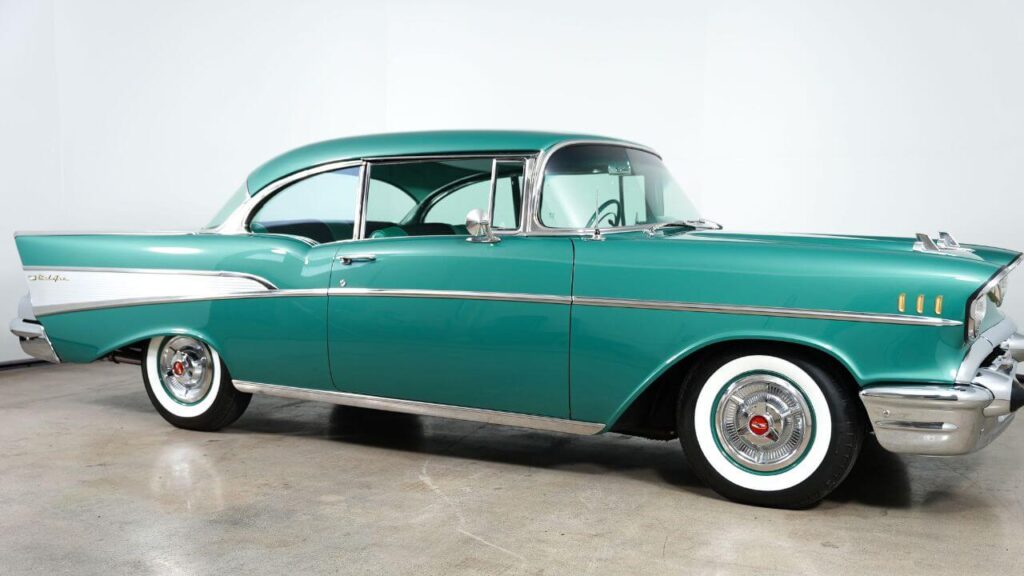Learn about how and why the Chevrolet Bel Air continues to turn heads across the United States; Tri-Five Glory to Modern Restomod Stardom.
The Chevrolet Bel Air swept onto the post-war market in 1950, and, since that time, the designation Chevrolet Bel Air has resounded between the walls of American garages and county-fair showgrounds as well as in the movie backlots of Hollywood. Combining such fabulous styling with its mechanical novelty and ingenuity, the car made an impression on the country–such that even now, the mention of a Chevrolet Bel Air immediately brings to mind an image of long chromed fenders, candy paint, and the throbbing, unmistakable sound of that V8 engine. Thus, collectors will go on to seek clean original cars or grand-scale reconstruction, making the model longer and more fascinating by the year.
A Short History of Chevrolet Bel Air
1950-54 Early foundations
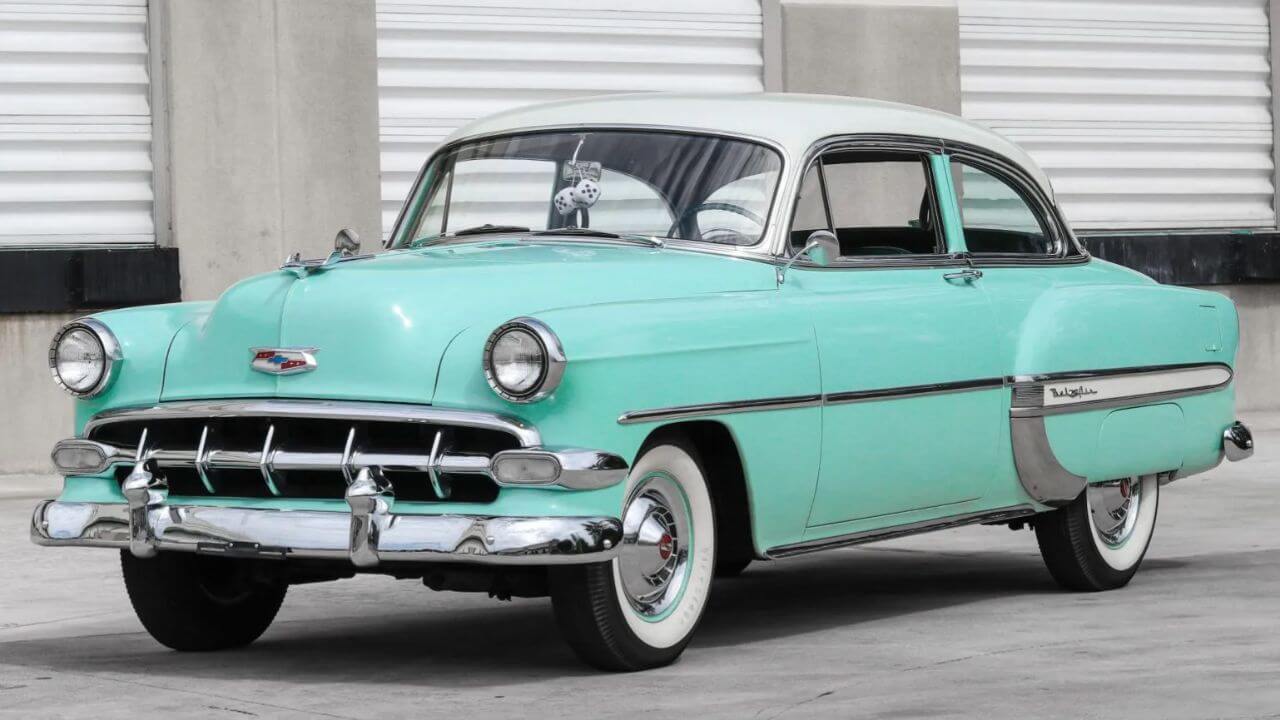
1955-1957, The Tri-Five Era
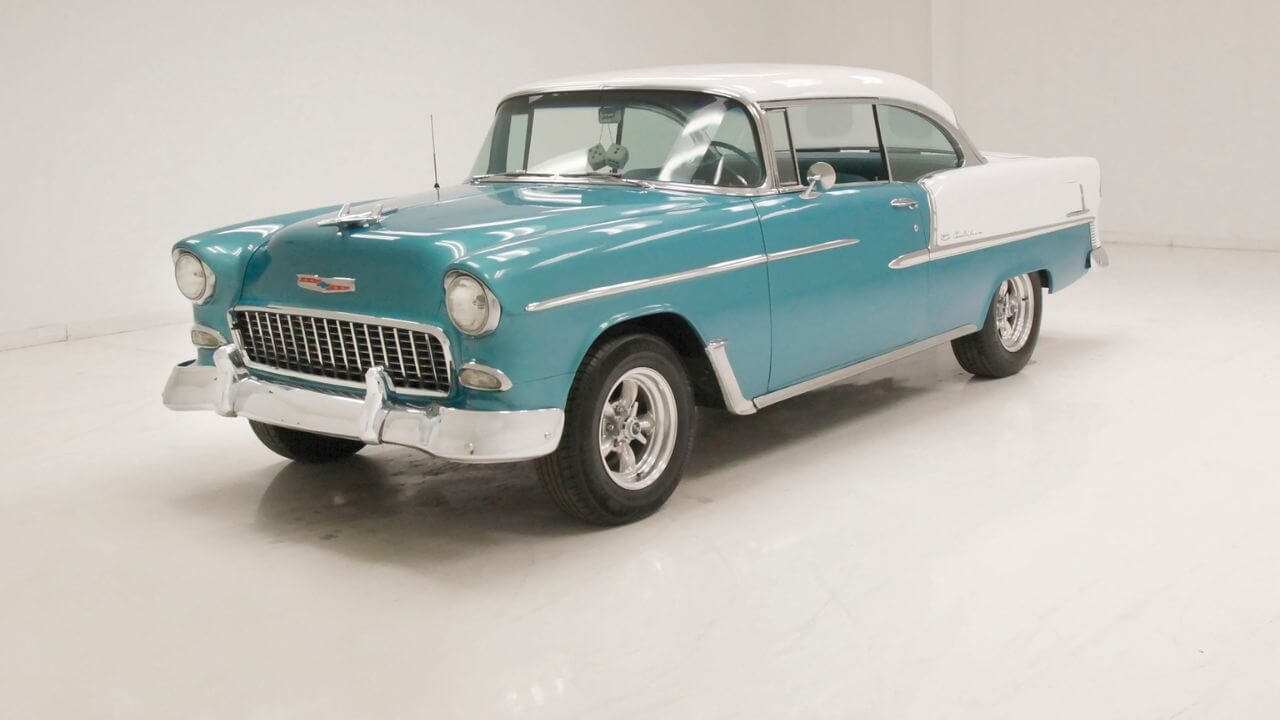
1958-1961 Longer Lower Wider
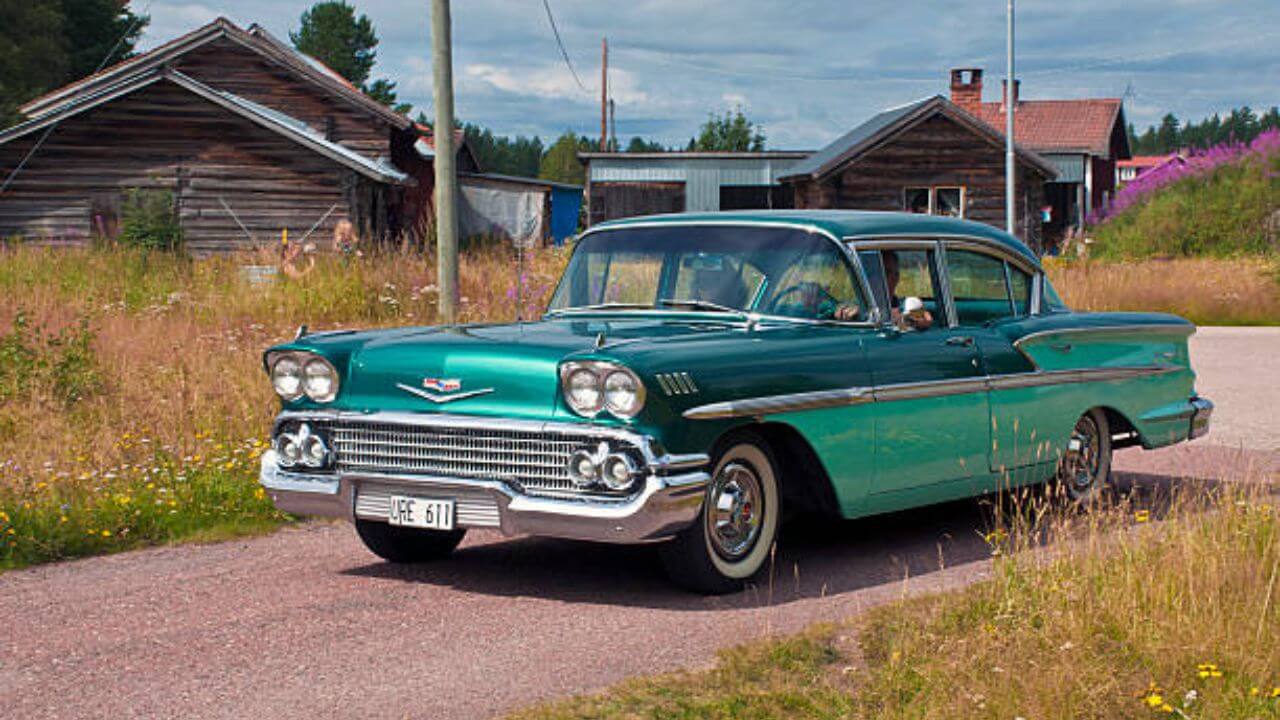
1962-1975 Practical Muscle & Gracious Sunset
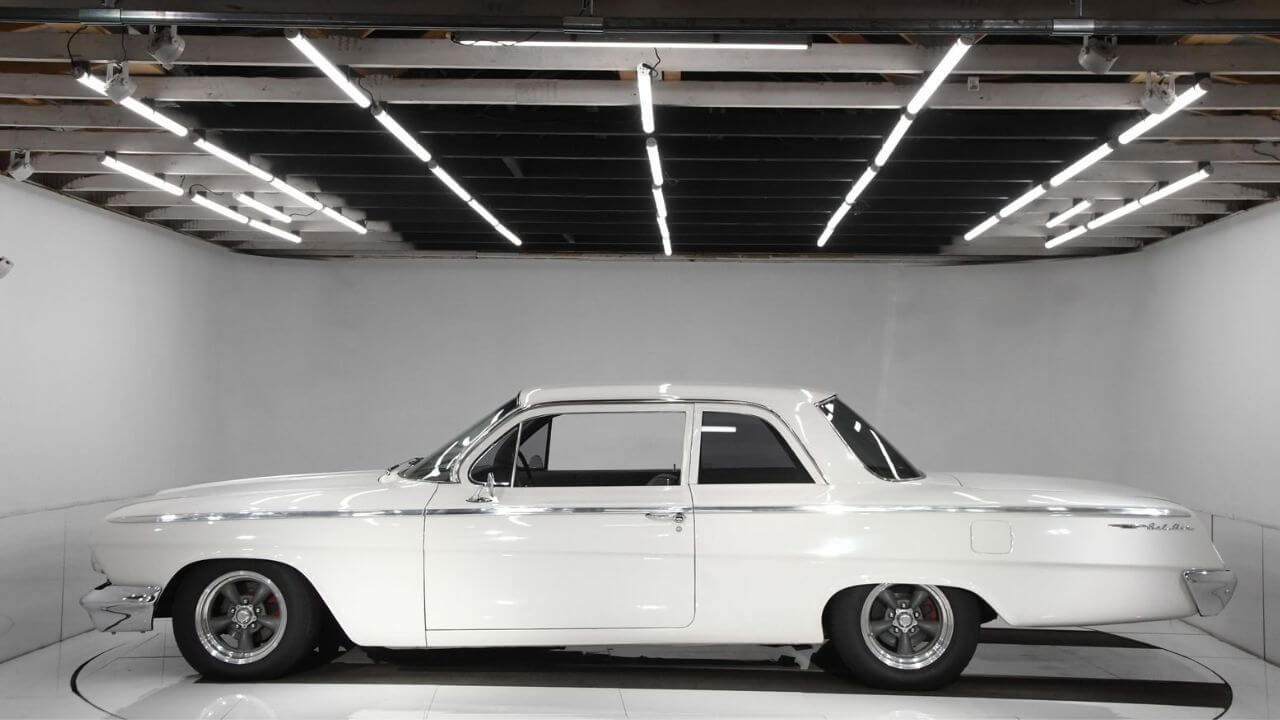
Design Language: Chrome, Fins and Cultural Context
Move a little closer to a show room fresh 1957 style and you can see the sweep-spears extending the headlights back into the tailfins, the anodized-aluminum quarter panel inserts and the mark of the V8 engines the 8 crest/V. Such styling was a reflection of 1950s expectations; the space race, rock n roll and drive in cinema. But even now, at a Cars & Coffee gathering in Austin or a concours field in Pebble Beach, a pristine Chevrolet Bel Air will draw people to a halt. Its two-tone paint and polished bumpers eludes to a craftmanship that is seldom seen to be replicated in modern mass-productions.
Engine Specifications Where Legendary Events Took Place
Since passion-seekers are more interested in mechanical specifics, what follows is a story description of the powerplants that characterized the Chevrolet Bel Air experience-once again no dry dead bullet point endeavour.
The first of these was the dependable 235 cu in (3.9 L) Blue Flame Inline-six that developed approximately 115 hp and was available with either a three-speed hand shifter or, later, a two-speed Powerglide transmission. Low-maintenance, smooth torque, not to mention valve settings made easy driving in the early 1950s.
Then a few years later in 1955 Chevrolet tore up its own rule book by fielding the new small-block 265 cu in (4.3 L) V8. It was stuffed with a forged-steel crankshaft and lightweight valve train, and its 162 hp two-barrel version provided a good dose of bruising power–family sedans could now accelerate like hot rods. In the following year, 1956, the identical block was fitted with a higher compression ratio of 9.25:1 and beefed-up bore walls, shoving power up to 205 hp.
Then, the well-known 283 cu in (4.6 L) V8has come in 1957. Add the Rochester mechanical fuel- injection, and horsepower finally equalled displacement: a neat 283 hp. The Chevrolet Bel Air was therefore the poster-child of low cost performance.
Entering 1958, the 348 cu in (5.7 L) optional W-series big-block could deliver as much as 315 hp (235 kW) and 356 lb-ft (482 N-m) of torque in any form. Serious intent to anyone loitering beside you at the stoplight was advertised by its unique scalloped rocker covers.
Without a doubt, the most potent factory power came in 1965 after the big-block 396 cu in (6.5 L) V8 with ratings of 325 hp slipped under the hood. Coupled with more robust Super Turbine 400 automatics or four-speed manuals, or four-speed manuals, this drivetrain made the Chevrolet Bel Air the fastest full-size sedan with whitewalls as it could go 0-60 mph in about seven seconds.
Interior Design and Comfort the Cabin:
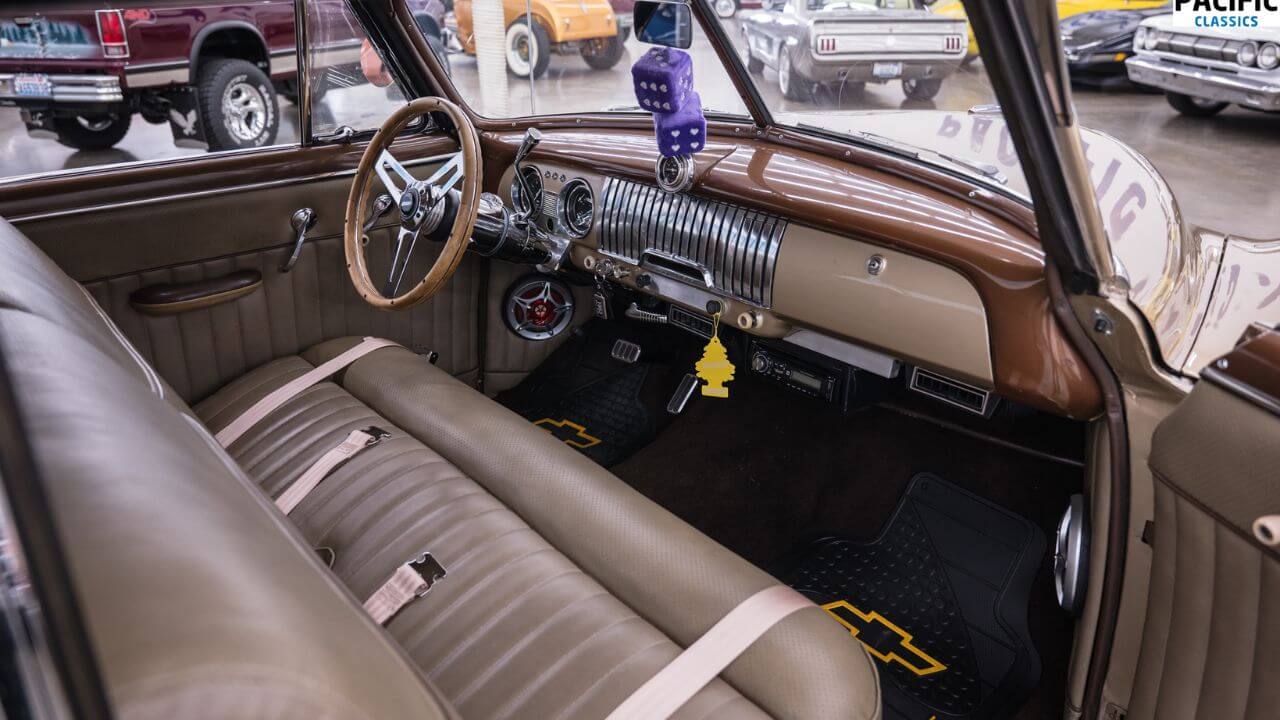
Chevrolet came out with factory air-conditioning in 1953, Wonderbar signal-seeking radios in 1954 and power-operated front seats in 1955, so there were a host of add on extras in the Tri-Five years. Therefore, the Chevrolet Bel Air was the car that took the edge off between the sales market practicality and the Cadillac luxury level. Safer padded dashes, warmer walnut-toned appliques, deep-pile carpet to absorb road roar all later became characteristic- proving that performance was not the only thing to be advanced.
Professional Perspective of the History of the Chevrolet Bel Air
Having been there, Dr. Lisa Hernandez who is an automotive historian in the University of Michigan and a writer with her book, Chrome Dreams – Post-War Design in Detroit, observes that the Chevrolet Bel Air was not just a mode of transportation, but the dream within reach that enabled ordinary Americans to feel the future with every turn of the key. Its balance of technical prowess and one of its distinctive designs and fanciful style still shape collector interests and historic preservation programs by manufacturers.
Her estimate concurs with market reports in the Antique Automobile Club of America, which is evidencing Bel Air values on an ever-increasing scale-particularly the fuel-injected 1957 convertibles, whose prices, in some cases, are approaching those of $1 million-plus sales at the auction. This unflagging interest explains the reason why California and Connecticut frame-off restoration shops have waiting lists in the several-year range.
Restoration, Collectability and the Modern Market
Since nostalgia is part and parcel of the car culture, most of them seek restomods, installing LS-series V8s, overdrive automatics, and disc brakes beneath the old sheet metal. But purists will cite originality as bringing provenance that is priceless, citing period-correct Delco-Remy generators, Carter WCFB carburetors, and factory inspection crayon marks. Either path retains the Chevrolet Bel Air designation alive continuing cottage industries which refurbish and replicate the trim, original OEM styled upholstery and N.O.S. mechanical parts.
In addition, peer-reviewed automotive economics studies observe that vintage cars which have had a pop-culture imprint, like Elvis films, surfer-music album covers and Route 66 postcards, have had better than average appreciation over time. The Chevy Bel Air, which was the star of such a variety of films as American Graffiti or Jay Leno Garage, fulfills that requirement with honors.
Results: Why Chevrolet Bel Air Story Still Matters
In conclusion, Chevrolet Bel Air is alive and kicking as it is the car of hope. With its booming small-block low end and its soothing stainless steel trim, the model makes us recall a moment in history that is distinctly American, where design, technology and populist confidence all came together. Thus when you pull a set of auction catalogs to peruse, when you stand scrubbing down an abandoned barn-find sedan, when you simply day-dream about Friday-night cruises, the repetition of the name Chevrolet Bel Air helps re-establish your connection to some good blood that will not die. And as new generations come to know the car through computer technology and electrified restomods, the legend will continue to grow–which is evidence that the timeless heartbeat of American automotives has not died, and never will, mile after mile.

